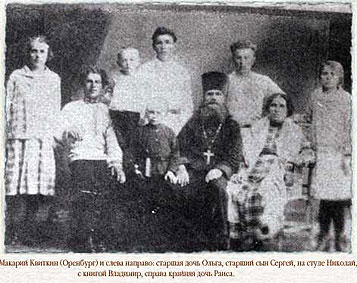In the church of Saint Nicholas near Orenburg (Russia) the icon of Saint Macarius Kvitkin exudes myrrh
(
10.04.2006
)

The icon of the first
There are five wonderworking icons in this church. Among them the first to exude myrrh was the icon of the Mother of God in the year 2000. three years later the same miracle occurred with the icon of the hieromartyr Macarius of Orenburg.
In 1995 the Orthodox Life magazine published the Life of Fr. Macarius, written by his son Vladimir.
The martyrdom of Fr. Macarius had begun with his refusal to recognize as a hierarch and to submit himself to Metropolitan Sergius, whom the Soviet government had appointed patriarchal locum tenens in place of Metropolitan Peter Krutitsky, by then already sent to the camps. With his stance he caused division in the parish, at which the majority of the faithful expressed their trust in the newly come priest, and opposed their long-time priest—a supporter of the metropolitan who allied with the atheist government. After this the authorities excessively taxed Fr. Macarius, to a point beyond the priest’s means. They confiscated his house, and soon after persecuted him and his family. In return for renouncing his priestly rank, they offered him a teacher’s position. Then they threatened him with the life of his children, but he replied that he was not afraid of death, that he entrusted his children to the will of God, and he would not, under any circumstances, break the oath he had sworn to God. In January 1931 he was arrested and soon after shot by a “non-court decision”, as it was the delicate expression the communist heirs used while “rehabilitating” him in October 1991. The family had been warned about his death by the prison guards. After the murder, the authorities not only refused to give them his body for a burial but they also forbade them to talk about it. People said that he had been suffocated in a basement room by a poison gas together with a group of priests from
Source: Annews